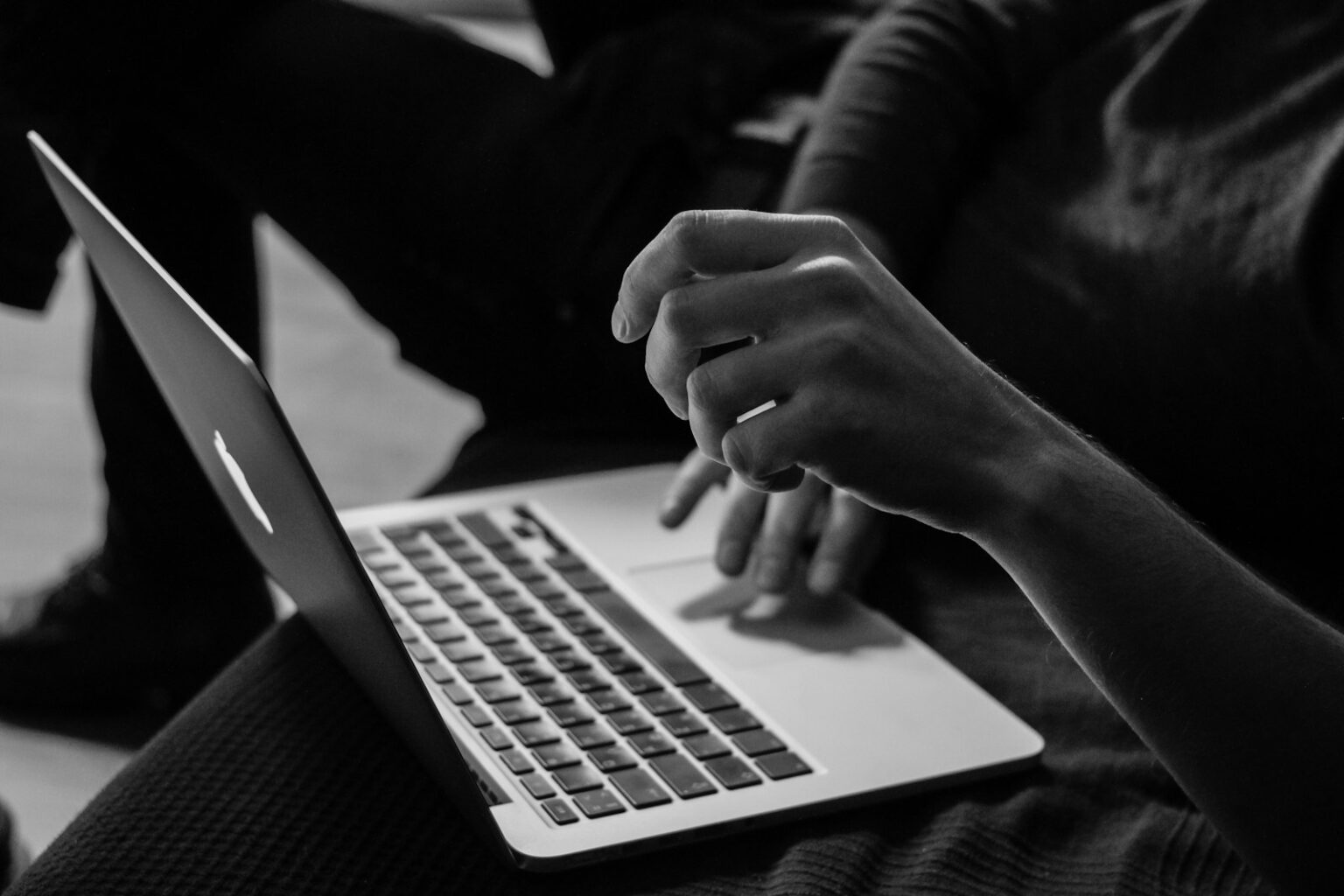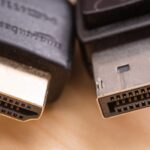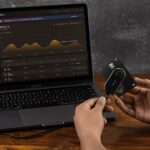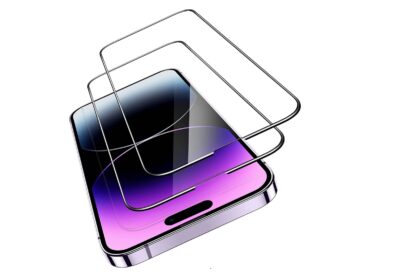Meet Apple’s Screenshot utility, the native snipping tool that grabs anything on your display fast and clearly. Open it with Shift‑Command‑5 for on‑screen controls that capture a full display, a window, a selected region, or start a recording.
For quick captures, use keyboard shortcuts: Shift‑Command‑3 saves an entire screen and Shift‑Command‑4 lets you pick a region or press Space for a window. Add Control to any shortcut and the image goes straight to your clipboard for pasting into email, chat, or documents.
Files save as .png for screenshots and .mov for recordings, with names that start with “Screenshot” or “Screen Recording” plus date and time. Options let you set a timer, show clicks or the pointer, pick a save folder, and choose HDR or SDR when available.
This single tool handles snaps and recordings, so beginners find it simple and power users get the fine controls they need for daily snipping and quick demo clips.
Meet the Mac “Snipping” Tool: Screenshot Basics
Press Shift‑Command‑5 and a compact capture bar appears. It shows still and recording controls in one tidy panel. You can capture the full screen, pick a window, or draw a custom area.
Options opens a menu for save destinations (Desktop, Documents, Clipboard, Mail, or Other Location), a timer, pointer and click visibility, microphone input, floating thumbnail, and HDR vs SDR choices.
The floating thumbnail appears briefly after a snap. Drag, share, or mark up an image before it saves. This speeds simple edits without extra apps.
Open Screenshot through Spotlight if you prefer typed access. Note that some protected windows and media apps block direct capture—this is normal for certain system or DRM‑protected content.
- Built‑in utility for quick images and recordings
- Single panel for switching between captures and video
- Options menu centralizes common settings
| Action | What it does | Where it saves |
|---|---|---|
| Capture entire screen | Grabs every visible display | Desktop / Documents / Clipboard |
| Capture window | Targets a single app window | Default folder or chosen location |
| Record screen | Video of full screen or area, mic optional | Movies folder or custom location |
Use Keyboard Shortcuts to Take Screenshots Fast
A few keystrokes will have your screen saved in seconds. These keyboard combos speed routine captures and keep you focused. Learn a handful and snapping images becomes nearly automatic.
Capture the entire display
Press Shift‑Command‑3 to capture the entire screen. This shortcut saves a full image of every visible display to the desktop by default. Add Control and the screenshot copies straight to the clipboard for instant pasting.
Capture a selected portion
Press Shift‑Command‑4 to switch the cursor into crosshairs. Click and drag to define an area, then release to save a tighter, cleaner screenshot of just what matters.
Capture a window or menu bar
After Shift‑Command‑4, tap Space and the cursor becomes a camera. Click any window or the menu bar to capture it with a subtle shadow. Use Control with this combo when you want the image on the clipboard instead of saved.
- Shift‑Command‑6 captures the Touch Bar on supported Macs.
- Change any keyboard shortcut in System Settings > Keyboard > Keyboard Shortcuts > Screenshots.
- Practice these combos so you can take screenshots without touching a mouse.
| Action | Shortcut | Result |
|---|---|---|
| Capture entire screen | Shift‑Command‑3 | Save to Desktop (or clipboard with Control) |
| Capture portion | Shift‑Command‑4 | Drag to select area |
| Capture window/menu bar | Shift‑Command‑4, then Space | Camera cursor; click target |
Open the Screenshot Toolbar (Shift‑Command‑5) and What Each Tool Does
Press Shift‑Command‑5 and a compact control bar appears at the bottom of your screen. That bar groups capture and recording tools so you can pick one action without hunting through menus.
The buttons let you capture a full screen, a single window, or a selected portion. Pick the capture type, then click Capture to save an image. For video work, switch to the record icons and choose full screen or a portion before pressing Record.
Click Options for save location, a timer, pointer and click visibility, microphone selection, floating thumbnail, remember last selection, and HDR/SDR choices. Stop any screen recording from the menu bar when finished.
- Bar shows all tools in one row for fast access.
- Floating thumbnail lets you drag the new file into apps, or click it to mark up or trim.
- Use a microphone in Options when narrating a video.
| Control | Function | When to pick it | Result |
|---|---|---|---|
| Entire screen | Capture full screen image | Save whole display or multiple monitors | Saves .png to chosen folder |
| Window | Target one app window | Grab a single app without extra background | Image with subtle shadow, ready to edit |
| Selected portion | Drag to define area | Focus on specific content or UI elements | Tighter image, smaller file size |
| Record (full or portion) | Create video of screen activity | Tutorials, demos, or walkthroughs | Saves .mov; stop from menu bar |
Options and Settings That Streamline Your Screen Captures
Adjust key settings so each grab looks and lands where you want it. The Options menu puts save destinations, timers, pointer visibility, and recording inputs in one place so you can work faster.
Pick a save destination
Save to lets you send files straight to Desktop, Documents, Clipboard, Mail, or an Other Location. Choose a default that matches where you usually edit or share files.
Timer, pointer, and audio choices
Set a short timer delay when you need time to open menus or hover over items. Toggle Show Mouse Pointer or show clicks for clearer instructions in tutorials. For recordings, select a microphone for narration or pick None for silent captures.
Floating thumbnail, repeat area, and format
Enable the floating thumbnail to drag, annotate, or discard an image before it saves. Turn on Remember Last Selection when you capture the same area often. Choose HDR for richer dynamic range on supported displays, or SDR for broad compatibility.
- Defaults: screenshots export as .png; recordings save as .mov.
- Review each option when sharing across devices to ensure colors and format hold up.
| Setting | Purpose | When to pick it |
|---|---|---|
| Save destination | Where files are stored | Pick Desktop for quick access; Documents for organization; Clipboard for pasting |
| Timer | Delay before capture | Use for menus, tooltips, or staged UI |
| Show Mouse Pointer / Clicks | Include cursor visuals | Choose for tutorials and bug reports |
| Microphone | Record narration | Select when voiceover is needed; choose None for silent takes |
| Floating thumbnail | Quick edit and drag | Turn on for fast annotation and sharing |
How to Use the Snipping Tool on Mac for Screen Recording
Capture app activity or an entire desktop session with the toolbar’s record options. Open Screenshot with Shift‑Command‑5, then pick Record Entire Screen for broad demos or Record Selected Portion when you need a tight frame around a window or area.
Start, stop, and save your recordings with the toolbar controls
Click Record to begin. When you finish, click the Stop button in the menu bar and the clip saves automatically.
The floating thumbnail appears briefly. Click it to trim dead air or drag the clip into an app for quick sharing.
Manage default file formats and destinations for videos
Recordings export as .mov by default. Open Options in the toolbar to pick a save destination such as Desktop, a folder, or Clipboard.
Select a microphone in Options to add narration and toggle Show Mouse Clicks when clicks should be visible. Resize the selected area if you want a window-specific video and repeat your chosen settings for consistent results.
- Launch via Shift‑Command‑5, choose full screen or selected portion, then press Record.
- Stop from the menu bar; file lands where Options specifies.
- Trim or drag the floating thumbnail for quick edits and sharing.
| Action | Result | When |
|---|---|---|
| Record Entire Screen | Saves full desktop video (.mov) | Full demos or multi-window activity |
| Record Selected Portion | Saves focused video (.mov) | Single app or UI element demos |
| Options → Microphone | Includes narration in videos | Tutorials and voiceover clips |
Pro Tips, Shortcuts, and Quick Fixes
A handful of pro tips keeps your workflow smooth when grabbing screen content. These notes help you speed routine grabs, fix common snags, and keep files organized.
Add Screenshot to your Touch Bar for one-tap access
Customize the Control Strip and drag the Screenshot button onto the bar on supported models. This gives one-tap entry to the capture panel and trims clicks when time is tight. It also makes the snipping tool mac feel instant.
Customize keyboard shortcuts in System Settings
Open Apple menu > System Settings > Keyboard > Keyboard Shortcuts > Screenshots. Change combos if they conflict with other apps. Try a different pair if you rely on command or shift often.
Know default formats and filenames
Screenshots save as .png and recordings as .mov. Filenames start with “Screenshot” or “Screen Recording” plus date and time, making each mac screenshot easy to find. An image library or dedicated folder helps team syncs.
When a window won’t capture: app restrictions
Some apps block window captures for DRM or protection. If a window won’t grab, pick a selected-portion capture and frame the visible area. This workaround often preserves needed content without errors.
- Keep menus visible with a short timer for hover states.
- Turn on show clicks for narrated clips; off for clean documentation.
- Revisit options often as workflows change.
| Tip | Action | Result |
|---|---|---|
| Touch Bar shortcut | Customize Control Strip | One-tap capture panel access |
| Change keyboard shortcuts | System Settings → Keyboard Shortcuts | Personalized combos, fewer conflicts |
| File defaults | Screenshots .png, recordings .mov | Consistent naming and easy sorting |
| Blocked windows | Use selected-portion capture | Frame visible content despite restrictions |
Conclusion
Wrap up your workflow with a few simple keystrokes and toolbar choices that keep screen capture fast and reliable.
Lean on Shift‑Command‑5 for guided controls, and grab instant snaps with Shift‑Command‑3 or Shift‑Command‑4 when you need speed. Tune an option to save files to a dedicated folder or the clipboard so your desktop stays tidy.
Record quick video explainers with a mic, then trim from the floating thumbnail before sharing. If a window blocks capture, frame the visible area with a selected portion instead.
With these habits and tools, you’ll make crisp screenshots, smooth recordings, and shareable files without breaking your flow.
FAQ
What keys capture the entire screen?
Press Shift-Command-3. The system saves a PNG image to your chosen location or copies it to the clipboard when you add Control. This shortcut is quick for full-desktop snaps.
How do I capture just part of the screen?
Press Shift-Command-4, then drag to select the area. Release the mouse or trackpad to capture. Add Control to copy the image instead of saving it.
Can I capture a window or the menu bar?
Yes. Press Shift-Command-4, then press Space. Click the window or menu to capture it. The image includes a subtle drop shadow unless you hold Option to remove it.
What does Shift-Command-5 do?
It opens the screenshot toolbar. From there you can choose entire screen, window, or selected portion captures and start or stop screen recordings. The toolbar also exposes options and timing controls.
How do I record my screen?
Open the screenshot toolbar with Shift-Command-5, select the record entire screen or record selected portion icon, then click Record. Use the stop button in the menu bar or press Shift-Command-5 again to stop and save the MOV file.
Where are screenshots saved by default?
By default, images save to the Desktop as PNG files. Use the toolbar Options to change the save location to Documents, Clipboard, Mail, Messages, or a custom folder.
Can I set a timer before capture?
Yes. In the screenshot toolbar Options, choose a 5- or 10-second delay. This helps you arrange windows, menus, or pointer placement before the image is taken.
How do I include the pointer or clicks in recordings?
In Options inside the toolbar, toggle “Show Mouse Clicks” for recordings. You can also choose a microphone to record voice or system audio during screen capture.
What’s the floating thumbnail and why use it?
After capture, a floating thumbnail appears in the corner. Click it to edit, crop, or share without opening Preview. Let it fade to save automatically to your destination.
Can I repeat the same selection quickly?
Yes. The toolbar remembers your last selection so you can repeat precise-area captures without reselecting each time. This speeds up batch captures.
How do I change default file format or filename?
Screenshots save as PNG by default and recordings as MOV. Change formats using Terminal commands or use third-party apps for alternate defaults. Filenames follow the “Screen Shot [date] at [time]” pattern.
Why won’t a window capture correctly?
Some apps block screen capture for security or DRM reasons. If a window stays blank or gray, check app permissions in System Settings > Privacy & Security or use recording with permission prompts enabled.
How can I add a screenshot button to the Touch Bar?
Open System Settings > Keyboard > Customize Control Strip and add the Screenshot control. Tap it for one-tap access to capture options and recording tools on compatible MacBook Pros.
Is there a quick way to copy a shot to the clipboard?
Yes. Hold the Control key while using any screenshot shortcut (Shift-Command-3 or Shift-Command-4) to send the image directly to the clipboard for pasting into apps.
Can I pick HDR or SDR for captures?
On Macs that support HDR capture, system settings or app choices may let you pick HDR or SDR for recordings and screenshots. Check Display and Screen Recording options when available.























